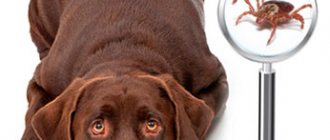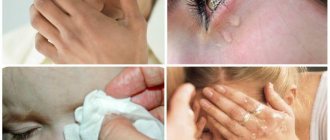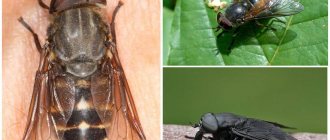The tick is a common parasite whose activity period occurs in spring, summer and autumn. Throughout the warm period and even in the autumn cold, this insect looks for victims, waiting on blades of grass and bushes.
Even people in full clothing and animals treated with special means are not completely protected from tick bites. Therefore, you need to be prepared for the parasite to stick to the skin: know the likely consequences, the algorithm of necessary actions, and how to remove the tick.
How to properly remove a tick from your body
What happens if you tear off a tick depends on how professionally the procedure is carried out. It is necessary to remove the parasite carefully and strictly according to a certain algorithm. Otherwise, the following complications may occur:
- the head or proboscis of the tick is stuck in the skin;
- the parasite will be squeezed, which will lead to the spread of the poison;
- the insect will suffocate or otherwise die, increasing the risk of inflammation and infection.
To avoid these problems, you should use one of three methods to remove the parasite. It is important to understand that the best way to eliminate a tick is to use special tools. They can be purchased at the pharmacy.
A number of instruments (working like tweezers) are equipped with test tubes into which the parasite can be placed to be tested. This is required if a person lives or vacations in an area where the encephalitis tick is spread.
- The first method of removal is twisting. It is necessary to squeeze the head of the tick with your index finger and thumb. In this case, under no circumstances should you put pressure on the body itself. When the fingers are securely fixed enough, you can twist the parasite. This can be done clockwise or counterclockwise. The main thing is that the parasite is located perpendicular to the skin, otherwise the proboscis may break off. This method is the most convenient and fastest. Experts advise using tweezers rather than fingers, if you have them at hand. And the best option, as already mentioned, is to use a special tool. It is advisable to avoid skin contact with the tick by wrapping your fingers with a piece of cloth soaked in alcohol.
- The second method is removal with thread. It should be strong and not tear from being pulled. The thread is wrapped around the tick near the wound. You can't grab the abdomen. After application, the thread is tightened and light tugging movements begin. This method is not suitable for removing insects from pets, as it may take several minutes. It also does not always work on small mites.
- The last method, the most controversial, is the use of compounds with a high percentage of fat content, designed to suffocate the insect. You can use olive or vegetable oil, or any similar liquid. It is carefully applied to the wound so that the substance gets inside and affects the head of the tick. The danger of the method is that the parasite can actually suffocate, and not just feel discomfort and crawl out. In this case, the dead insect will become firmly stuck in the skin, inject poison into the blood and lead to the development of inflammation.
What to do if the tick's head remains in the body
Ticks are carriers of dangerous diseases. It does not spread viruses and infections in all areas, but there is still a danger of infection from it. To find out how high the risk of infection is, you can check the distribution map of dangerous parasites. It provides statistics on cases of infection after tick bites, displayed by region. It is important to remember that even if your region is not in the “dangerous” zone, you still need to submit the caught tick for analysis. This will minimize the risk of developing diseases.
But before you send the parasite for analysis, you need to get it out. Not everyone gets it right. In some cases, too sudden movements lead to the separation of the insect body from its head. As a result, part of the tick gets stuck in the skin, which is very difficult to remove on your own.
If the tick's head remains in the skin, it is best not to touch it and go to the nearest hospital or clinic. There, doctors, using special instruments, will pull out the head along with the proboscis, and also conduct an analysis. Testing the parasite for diseases is paid, but it allows you to reduce the risk of developing viruses and infections. If the insect turns out to be infectious, treatment for the disease it introduced into the human blood can begin immediately. This will save the patient from complications and expensive treatment in the later stages of pathology.
Of course, it is better to remove the tick immediately, since the presence of the parasite or its head in the body for a long time leads to an increased risk of infection. However, non-professionals may not be able to cope with this task, but will only worsen the situation by driving the head very far under the skin. If the patient realizes that he cannot cope with the task, he should immediately go to the hospital.
If there is a chance to remove the head (for example, it has not penetrated so deeply, it sticks out a little, you have special tools at hand), then you can try to do it yourself. How to do this is described below.
If the head of the tick remains in the body, various dangerous diseases can develop. Among the infections transmitted by the parasite, encephalitis, borreliosis and Lyme disease occupy the first place in terms of the level of harm caused.
Without treatment, these pathologies lead to disability or death. The longer a tick remains in the body, the greater the risk of infection, since the main concentration of virus pathogens is in its salivary glands. Therefore, the presence of the head in human skin is very dangerous: it is difficult to remove this particle, and with every minute the likelihood of infection increases.
Infections are not the only problem associated with ticks. The head of the parasite can lead to bacterial damage and the development of inflammation. Against the background of these processes, redness of the skin occurs and suppuration begins. Possible swelling. Due to the fact that the tick injects poison into the human body upon death, intoxication may begin (weakness, dizziness, nausea, fainting, dyspepsia). Some patients develop severe allergic reactions.
What should you not do if you are bitten by a tick?
A huge mistake is to lubricate the attached insect with vegetable oil. Some believe that thanks to such actions it will be removed “like clockwork.” In fact, the parasite quickly suffocates, while releasing the maximum amount of infected secretion into the blood. You should also not scratch the area where the insect is attached, even if the itching is very strong. You should treat the wound with alcohol more often, and the itching will quickly go away.
Attention: You cannot lubricate the bite wound with ointments and creams. It is also not advisable to wet the bite site for 48 hours or expose it to direct sunlight.
People who have been vaccinated against tick-borne encephalitis often ignore visiting the hospital after being bitten. But the insect can carry borreliosis and a host of other diseases for which vaccinations are not given. Therefore, if the tick head is successfully removed, it is important to collect all its parts and take them to the sanitary and epidemiological station or other specialized institution for analysis. This analysis will be ready within 1-2 days, so the infected person will still have a chance to administer medicine for emergency prevention of tick-borne diseases.
Tips to help remove a tick yourself:
If the tick's proboscis remains in the wound
Many people wonder what to do if the entire tick could not be removed. It depends on the size of the remaining part. Removing the head is quite simple if you use special methods. But the proboscis - a small thin appendage with which the tick sucks blood - is almost impossible to remove if it is the only thing left in the skin.
To avoid complications, after detecting a proboscis in the skin, you should immediately go to the doctor. Under no circumstances should you try to widen the wound, pick at it, comb it, or cut out a piece of fabric along with the proboscis. All this can lead to both bacterial infection and the spread of the viral pathogen from the remaining part of the parasite.
The best option, if the proboscis has not gone too deep and is located almost perpendicular to the skin, is to use a needle. This instrument must be made of stainless material, otherwise there is a risk of blood poisoning. The needle should be heated - this will remove pathogenic microorganisms. It is also advisable to treat it with alcohol. After this, the instrument is slowly inserted under the skin. They need to pry up the proboscis and carefully pull it out, if possible without widening the bite wound.
The proboscis often remains in the human body, but he does not notice it because the particle is too small. If you are sure that the proboscis is stuck in the skin, but you cannot see it, you can use a dampened piece of cloth. By thoroughly rubbing the wound with it (but without scratching), you can cause blood to drain from the affected area. The skin will lighten slightly and the foreign object will be easier to spot. If the proboscis is close enough to the epidermis, it can be removed with a needle. Otherwise, you urgently need to go to the first aid station.
If the proboscis cannot be removed, it is important to treat the wound with a soap solution before visiting the doctor, then dry it and apply iodine.
How to remove a tick head from a person at home
Several basic ways to get a tick head without leaving your home:
- Tweezers. If the head sticks out even slightly above the surface of the skin, you can grab it with tweezers and remove it with light twisting movements. First, it is recommended to lightly grab the skin around the wound so that the head moves slightly back, closer to the surface.
- If the head is stuck too deeply, you should not try to remove it yourself. But you can avoid inflammation without necessarily visiting a doctor. To reduce the risk of developing an inflammatory process, you should treat the wound with a 5% iodine solution. Treatment should be carried out twice a day until a crust appears on the wound. In this case, it is advisable to take the part of the tick that has come off the head to a doctor so that he can check it for viruses.
- Using a hot needle. The method is the same as in the case of the proboscis.
Remember that when pulling out a tick, you need to use only sterile instruments, and protect the skin of your hands with gloves or gauze, and the best option would be to consult a doctor.
The best ways to remove a tick and its parts
It is possible to try to remove parts of the tick yourself, but sometimes it is extremely difficult. If careful actions do not bring results, you will have to quickly go to the hospital. When it comes to a small child, any independent actions are excluded!
The Best Tweezers and Other Tick Removal Devices
The rules of behavior if the tick's proboscis or its head remains are as follows:
- Perform all actions while wearing thin rubber gloves.
- Do not make any sudden movements, and under no circumstances tug on parts of the insect.
- After completing the manipulations, wash your hands.
- Be sure to mark on your calendar when the bite occurred.
Attention: Contrary to some popular advice, cutting out insect particles from the skin, widening the wound and strongly picking at the skin is strictly prohibited!
There are several options for how to remove the head of a tick when it has come off, as well as extracting the whole insect:
- Take a sharp sewing needle and heat it over the fire with a lighter or match. Next, very carefully pick out the insect’s head. If the head is hard to see, you need to carefully wipe the skin at the site of the bite with damp gauze or a handkerchief - a clearly visible black dot will immediately appear. After removing the head, you need to wash the site where the parasite is attached with soap, dry the skin, and wipe the wound with alcohol (brilliant, hydrogen peroxide, iodine).
- Use strong tweezers (this method is suitable if the head has come off with part of the body, or the tick is entirely sitting in the wound). You should carefully unscrew the pest counterclockwise.
- Twist a loop of thread, throw it over the tick, tighten it, unscrew it counterclockwise.
It is almost impossible to remove the insect's proboscis on your own. Therefore, if it is not possible to remove it from a doctor, it is better to leave the particle in the body, treating it daily with 5% iodine. After a few days, the proboscis will be torn off and removed on its own.











